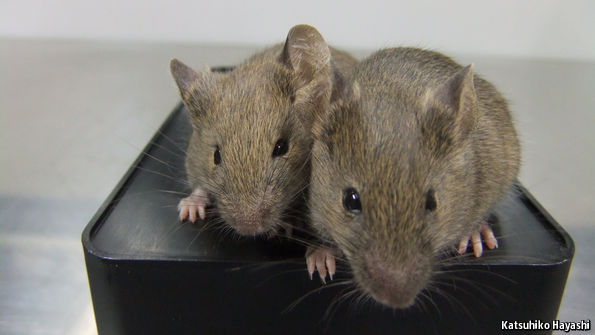Making sex cells from body cells

ISSUES of safety aside, the very idea of cloning people—of taking, say, a cell from the skin of a man or a woman and growing it into a new human being with exactly the same genes as its progenitor—is anathema to many. But what about taking such a cell and creating from it an egg or a sperm that can be used for in vitro fertilisation? That would enable infertile men and women, and gay couples, who wanted to raise children genetically related to both parents to do so, rather than relying on the assistance of an unrelated egg or sperm donor to start a family.
In people, this is not yet possible. But it is exactly what Katsuhiko Hayashi and his colleagues at Kyushu University, in Fukuoka, Japan, have done in mice. As they report this week in Nature, there are animals now scampering around cages in their laboratory whose maternal antecedents are egg cells derived not from the ovaries of their mothers, but from body cells (known as somatic cells), in this case from those mothers’ tails.
Nor does it stop there. In the past,…Continue reading
Source: Economist











